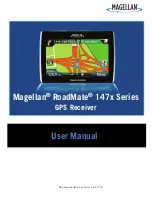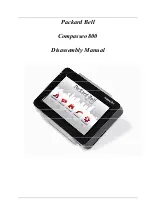
29
+380 44 507 02 07
List of prohibited operators
The monitoring device BI-910 TREK has the ability to work with a
list of prohibited operators. In addition to operating modes 0917 = 0, 1,
2, 3, which are discribed in this manual, operating modes 10, 11, 12, 13
are added.
If parameter value 0917 = 11, 12 or 13, the operator exclusion
logic is used. Depending on the operating mode and registered operators,
the device will try to register with all operators that are available and
which are not registered in the device. In other words, all operators that
will be registered in the device list are excluded.
When
operating
in
modes
11,
12
and
13,
the
APN/USNAME/USPASS parameters are taken from the profile settings.
When working with SIM1, these are parameters 0242/0243/0244.
When working with SIM2, these are parameters 1242/1243/1244.
Configuring the Device for Operation with RFID Readers
The BI-910 TREK Tracking Device is compatible with RFID readers
via the RS-485 bus.
To configure the reader correctly, please, read its manual carefully
first. To transfer the number of a card read to a server, respective I/O
component needs to be configured.
Apart from transfer of the card number, there is also a feature for
control of discrete outputs Out 1 and Out 2 depending on the cards being
read. For this, the device is capable of storing up to 20 card numbers in
non-volatile memory.
If a number of a card being read matches one of the card numbers
saved to the memory, the device activates one of the discrete outputs.
Network addresses 3, 9, and 10 are reserved for operation with
RFID readers. They cannot be changed, which is why a reader must be
configured with one of these addresses to operate correctly.
Configuring the Device for Operation with
Thermometers DS18B20
The BI-910 TREK Tracking Device is compatible with the DS18B20
thermometers. In total, up to five sensors may be connected.
Polling mode should be enabled in the device configuration settings
for operation with thermometers (ID 0990,
Addendum 1
).
If a thermometer detected on line, the device polls them and
retrieves current temperature readings. Given appropriate configuration
of I/O components (
Addendum 2
), the readings of the meters can be
transmitted to a monitoring server.
For correct detection of the thermometers, they have to be
configured appropriately: each thermometer must be assigned a
conventional number.
Meter numbering is, basically, entering special number string to the
configuration registers of the meters.
Necessary values are given in Table 6.
Table 6. Numbers of configuration registers of thermometers DS18B20














































